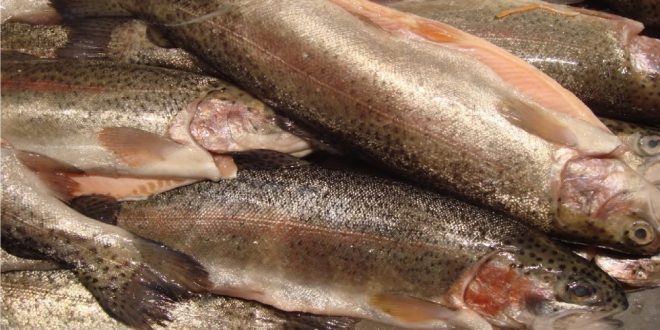The Canadian Food Inspection Agency (CFIA), the lead federal agency responsible for preventing the spread of animal diseases within Canada, confirmed the presence of whirling disease in the upper Bow River, downstream from the confluence of the Bow River and Cascade River within Banff National Park.
The province says a three-point action plan was developed after whirling disease was found in Johnson Lake on August 23rd.
As part of the plan, the province issued a precautionary quarantine on all commercial fish culture operations until the facility is cleared of the disease.
Sample results from the Sam Livingstone Provincial Fish Hatchery in Calgary and the Cold Lake Provincial Hatcheries have tested negative, while samples are also being collected from basins adjacent to the Bow, Oldman and upper Red Deer River watersheds.
Reducing the Risk of Spreading Whirling Disease:
Anglers, boaters and recreational water users can help reduce the risk of spreading whirling disease.
In order of potential risk, from highest to lowest, the movement of fish, mud or sediment, and water can spread whirling disease. It can be transmitted through equipment used for swimming, paddling, boating, water pumping and fishing, or through infected fish and fish parts. Never move live fish from one body of water to another (that is illegal in Alberta).
- Use fish-cleaning stations where available or put fish parts in the local solid waste system. Never move dead fish or parts between water bodies or dispose of them in a kitchen garburator.
Some basic routine precautions everyone should take:
After your day out:
- Clean your equipment
Before leaving any waterbody, examine all equipment, boats, trailers, clothing, boots and buckets and remove all mud, sand and plant material
- Eliminate water from all equipment before transporting
Most recreational equipment has spots that retain water and aquatic parasites. Ensure that you remove all water from every item before you leave the area. This includes boats, motors, boat hulls, boots, waders, bait buckets and swimming floats. Once water is eliminated, cleaning and drying are required.
Before your next outing or move to new waters:
- Clean and dry anything that came in contact with water. This may not eliminate the spore life-stage of whirling disease, but it can reduce the likelihood of transferring it to another water body.
- Use hot water (at least 90° C) to clean your equipment and let dry. If hot water is not available, spray equipment with high-pressure water. Do not use a car wash or dispose of water in a storm drain. Clean equipment away from any water sources.
- It is important to dry equipment thoroughly. After equipment is thought to be dry, allow for a minimum of 24 hours of drying time before entering new waters.
- Wash dogs with warm water and brush them thoroughly.
If you suspect a case of whirling disease, call 1-855-336-BOAT (2628).
Agencies/Canadajournal

 Canada Journal – News of the World Articles and videos to bring you the biggest Canadian news stories from across the country every day
Canada Journal – News of the World Articles and videos to bring you the biggest Canadian news stories from across the country every day

